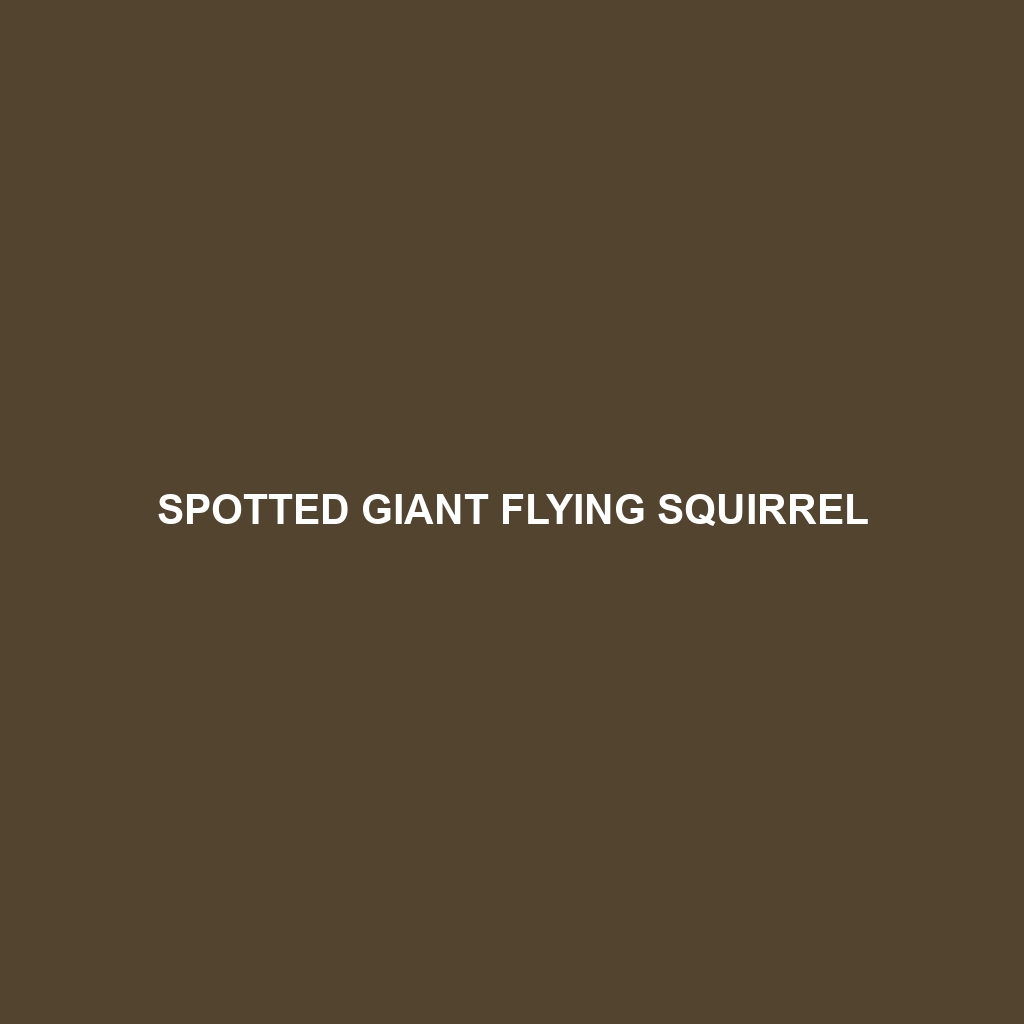Spotted Giant Flying Squirrel
Common Name: Spotted Giant Flying Squirrel
Scientific Name: Petaurista elegans
Habitat
The Spotted Giant Flying Squirrel is primarily found in the lush forests of Southeast Asia, particularly in countries such as India, Myanmar, Thailand, and Malaysia. This species thrives in arboreal environments, favoring montane and tropical rainforests where dense canopy cover provides shelter and ample opportunities for gliding from tree to tree. These squirrels can often be spotted at high elevations, where they utilize their gliding capabilities to navigate through their expansive territories.
Physical Characteristics
The Spotted Giant Flying Squirrel is known for its impressive size, typically measuring between 40 to 55 inches in length, including its long, bushy tail. Its fur is predominantly grey or brown, adorned with distinctive spots of white or cream that provide effective camouflage against the dappled light of its forest habitat. Its large eyes are adapted for nocturnal vision, while its strong limbs and unique patagium—the membrane stretching from its wrists to ankles—facilitate long glides and agile landings.
Behavior
These squirrels are primarily nocturnal, becoming active at dusk. They exhibit a range of social behaviors, often engaging in playful interactions with other individuals within their group. The Spotted Giant Flying Squirrel is known for its gliding abilities, capable of soaring distances of up to 150 feet. With a keen sense of territory, they use vocalizations and scent markings to establish and defend their home ranges.
Diet
The diet of the Spotted Giant Flying Squirrel mainly consists of fruits, nuts, leaves, and flowers. They are known to feed on the fruits of various tree species, which provide essential nutrients and energy. Their feeding habits play a vital role in seed dispersal, making them important contributors to their ecosystems. Additionally, they may consume insects and smaller invertebrates as a protein source.
Reproduction
The reproductive cycle of the Spotted Giant Flying Squirrel typically involves a breeding season in late spring to early summer. After a gestation period of approximately 60 to 70 days, the female gives birth to one or two offspring. The young are born with their eyes closed and are dependent on their mother for nutrition and protection for several months, during which they learn essential survival skills before venturing out on their own.
Conservation Status
The Spotted Giant Flying Squirrel is currently listed as vulnerable by the International Union for Conservation of Nature (IUCN). Habitat loss due to deforestation and human encroachment poses significant threats to this species. Conservation efforts are crucial to maintaining their populations and protecting their natural habitats.
Interesting Facts
– The Spotted Giant Flying Squirrel can glide for impressive distances thanks to its large patagium, which acts like a parachute and allows for controlled landings.
– They have a unique method of communication that includes a range of chirps, barks, and whistles, which are used to alert others to danger or to locate mates.
Role in Ecosystem
The Spotted Giant Flying Squirrel plays a pivotal role in maintaining forest ecosystems as a seed disperser. By consuming fruits and nuts, they help in the regeneration of forests, as their waste contributes to the growth of new plants. Additionally, they serve as prey for several avian and mammalian predators, showcasing their importance in the food web.
